Your fasting food doesn’t have to be boring! With a crispy outer layer and sago pearls / sabudana peeping through, this Sabudana Thalipeeth is a perfect Vrat recipe.
This Upvas Thalipeeth is a Maharashtrian recipe made with Sabudana (Tapioca Pearls / Sago) and boiled potatoes as main ingredients and taste great.
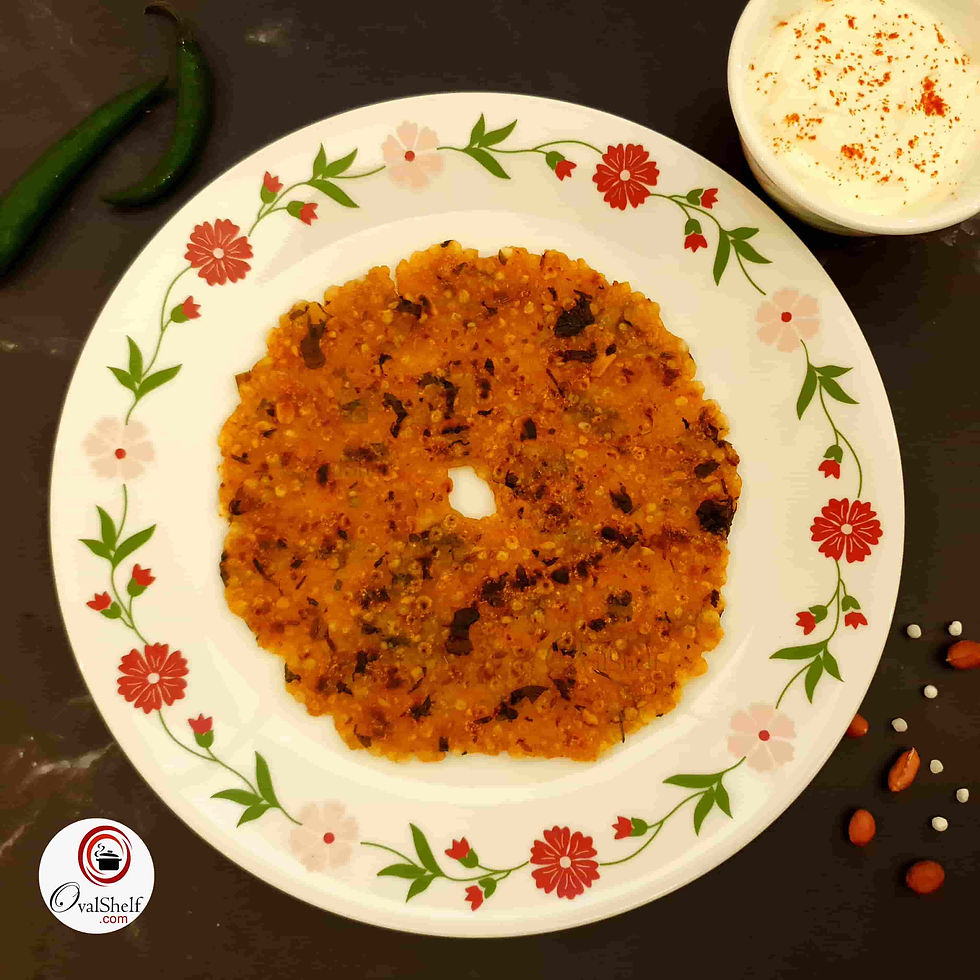
Jump to:
Easy to make, this Farali Thalipeeth will keep you going during those Vrat days.
Learn how to make Sabudana Thalipeeth (साबुदाणा थालीपीठ) in a quick video with step-by-step instructions below.
Quick, easy to follow video of Sabudana Thalipith:
"Soaking Sabudana well is important"
Rinse Sabudana 2-3 times and then soak it in enough water (follow measurements mentioned in recipe), making sure each and every Sago pearl is immersed in water. Let it rest for at least 4-5 hours or overnight so that water has enough time to seep in and reach the core of every Sabudana pearl.
Not using enough water, using too much of water or soaking for too little time will either make Sabudana dry, making it difficult to shape and also make Thalipeeth dry, hard and not pleasant to eat or will make Sabudana too wet and sticky, again making it hard to shape and Thalipeeth will become soft and soggy.
Ingredients that make Sabudana Thalipeeth delicious
It’s the combination of ingredients and the way it is shaped and shallow fried that makes this Sabudana Thalipeeth recipe so scrumptious.
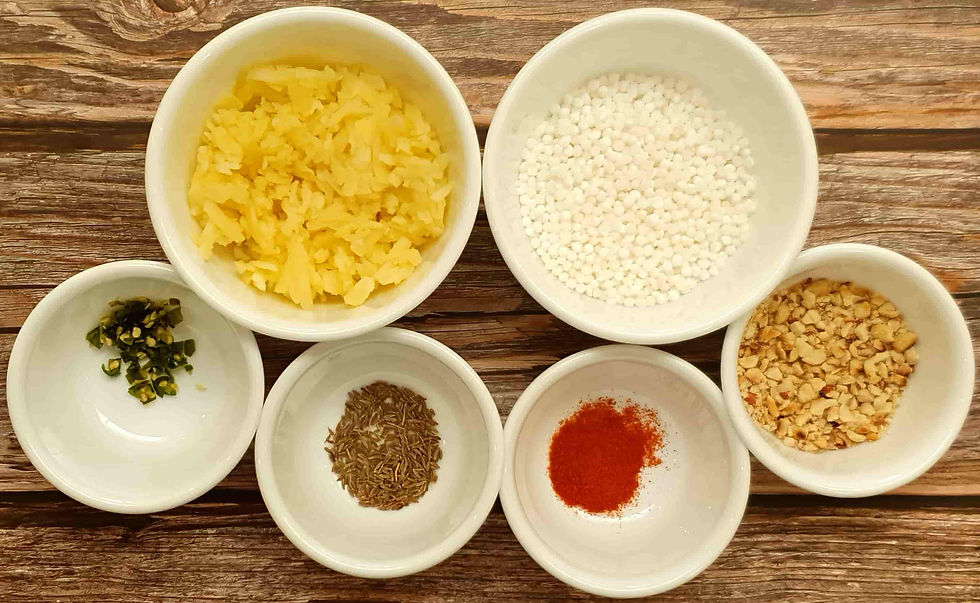
Potatoes: They offer body and act as a binding agent so that Sabudana Roti can be easily shaped and doesn’t fall apart. They are incredibly filling and keep you full for longer.
Peanuts: They offer crunch and texture to Tapioca Thalipeeth along with being a great source of plant protein during those fasting days.
Green Chillies, Cumin Seeds, Red Chilli Powder, Lemon Juice: All these ingredients add plenty of flavour to this easy Sabudana Thalipeeth recipe. Green Chillies and Red Chilli Powder give it a spicy kick. I like to use red chilli powder as well along with green chillies as it does give a nice colour to the finished Thalipith. But only using red chilli powder won’t give that extra depth of flavour that green chillies naturally have. Also, as green chillies used in the recipe are finely chopped, they do give a punch when you bite on them. Lemon juice makes this Upvas Thalipeeth slightly tangy making it taste better as well as giving a bit of moisture that comes in handy whilst kneading and shaping.
Coriander / Cilantro: Nothing needs to be said for Coriander / Cilantro. It just converts and makes any dish that it is added to extremely flavourful. But as many people do not eat coriander / cilantro during fasting, I have kept this ingredient optional in this Sago Thalipeeth recipe which you can omit if you don’t eat it. But if you are fine with eating coriander during fasting, I will suggest not to miss adding it.
Ghee / Clarified Butter: Ghee does lift this Upwas Thalipeeth up and makes it even more flavoursome if you use it for shallow frying. But I know some people don’t fancy its aroma, in that case you can also use oil for shallow frying.
Kneading and Shaping Correctly
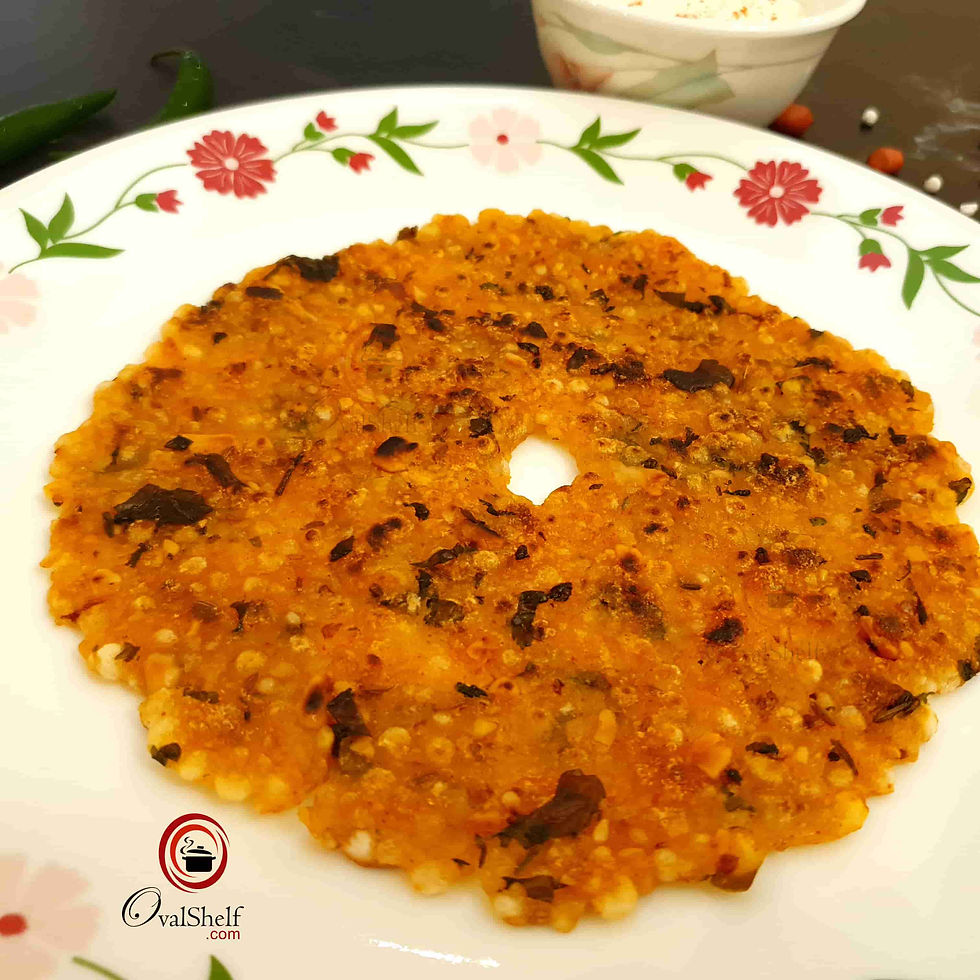
When kneading, its important that you squeeze and knead the mixture so that everything binds together well. DO NOT use any water while kneading, it will make this Upvasache Thalipeeth soft and it won’t be light, crunchy and crisp after shallow frying. If you are really finding it hard to knead, just use a few drops of water, ONLY if necessary.
For shaping, I will suggest you use a parchment / butter paper. Some do use plastic sheets / cut plastic bags, but they can easily stick to hot tawa / pan while transferring Sago Pancake to tawa.
Grease parchment / butter paper with some ghee / oil before starting to shape, and dip your fingers and palm in water to avoid sticking and to help with flattening and shaping. Shape to form a flat circle (as shown in the video), taking care to seal any cracks that have appeared on sides. Also make sure that the surface is evenly flat and smooth everywhere without any finger marks, or else Thalipeeth won’t get shallow fried properly and won’t be as crunchy all over.
Also, I like to make a hole in the centre. This helps whilst frying as you can pour ghee / oil in it so that Thalipeeth gets shallow fried properly not just from the outer edges, but also from the middle and centre of Thalipith is also crispy and tastes as flavourful as the outer edges.
Shallow Frying and Serving
I will suggest you use a non-stick pan / tawa for shallow frying as this Sabudana Thalipith has a tendency to stick. Only start shallow frying Thalipeeth after pan / tawa heats up properly.
Cover and cook Thalipith till its crispy and golden brown from bottom. As this Farali Thalipith is delicate, flip it only once and DO NOT cover after flipping or else it won’t become crunchy.
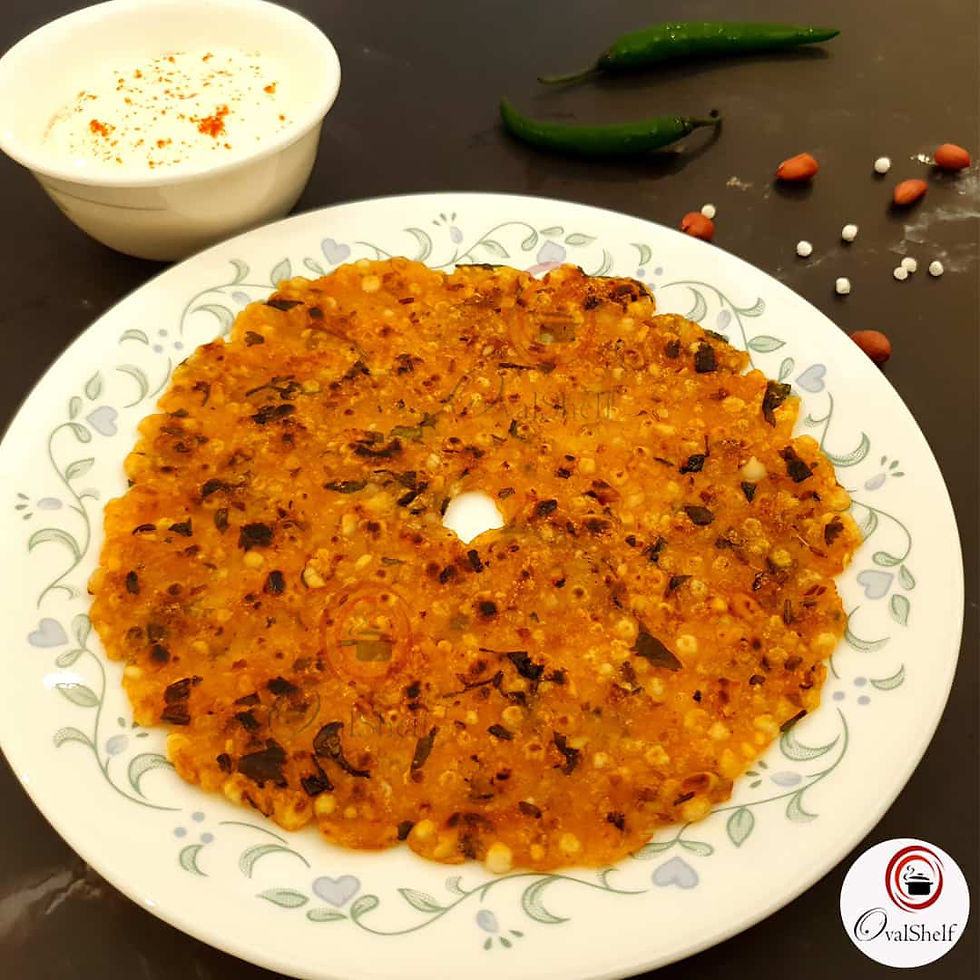
After it’s golden brown from both sides remove and serve IMMEDIATELY. If you leave this Sago Thalipith for long and allow it to cool down it will get soft & soggy!
You can serve this delicious Sabudana Thalipith with whisked sweetened yogurt (curd / dahi) sprinkled with some red chilli powder.
As this Tapioca Thalipeeth is so delicious, you can also have it for breakfast or snacks during non-fasting days as well. It will be great with a cup of tea or coffee. During these normal non-fasting days, you can also serve it with chutney of your choice or even with some tomato ketchup, especially when serving kids.
Here are other OvalShelf’s Breakfast and Snacks and Veg recipes.
Some OvalShelf’s quick and easy recipes that you will really love are:
Check out OvalShelf’s collection of Salads and Condiment recipes.
Some trending OvalShelf recipes:
Recipe Card
Latest OvalShelf recipes:
Step-by-step instructions with photos:
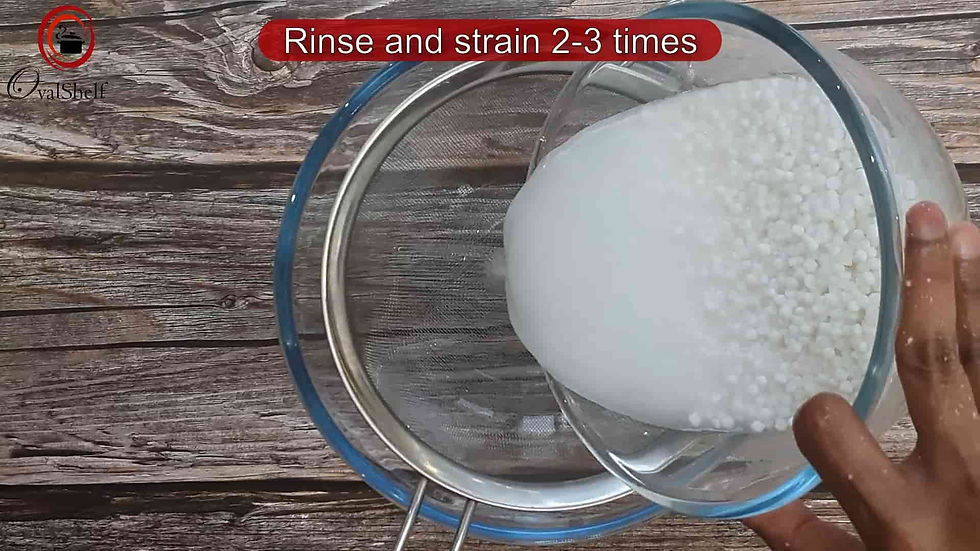
• Rinse and strain Tapioca Pearls / Sago (Sabudana) 2-3 times.
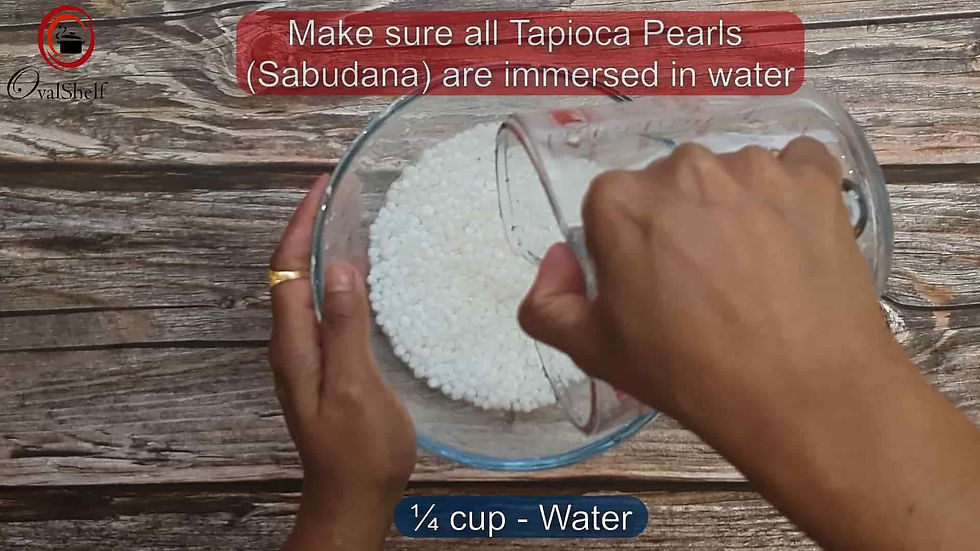
• Then add water, cover and let it soak for 4-5 hours or overnight. Make sure all Tapioca Pearls are immersed in water.
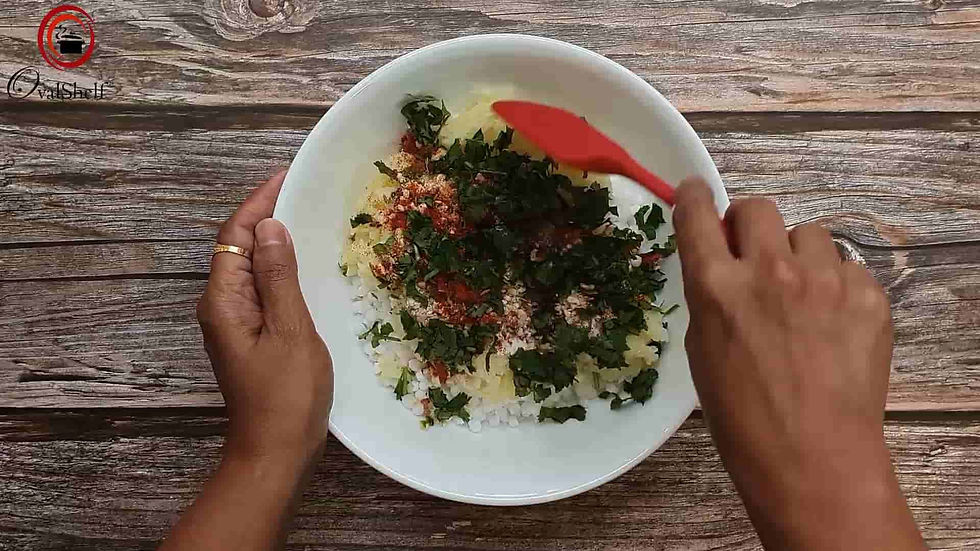
• After 4-5 hours add perfectly soaked Sabudana to a bowl along with potatoes, peanuts, green chillies, cumin (jeera) seeds, sugar, salt, red chilli powder, lemon juice, cilantro/coriander (optional) and mix well.

• Squeeze and knead to form a dough. DO NOT use any water to make dough. Just add few drops of water if you think its dry, ONLY if necessary.
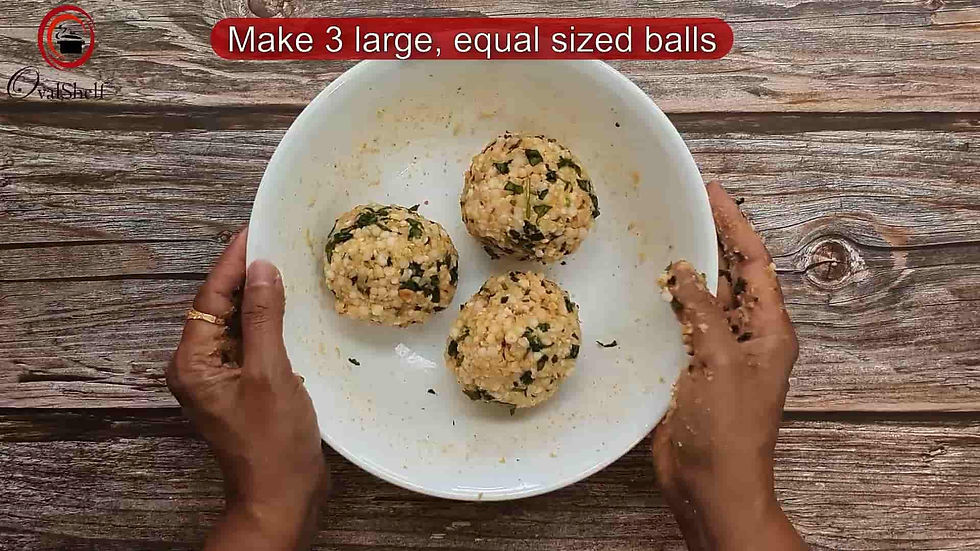
• Then make 3 large, equal sized balls.
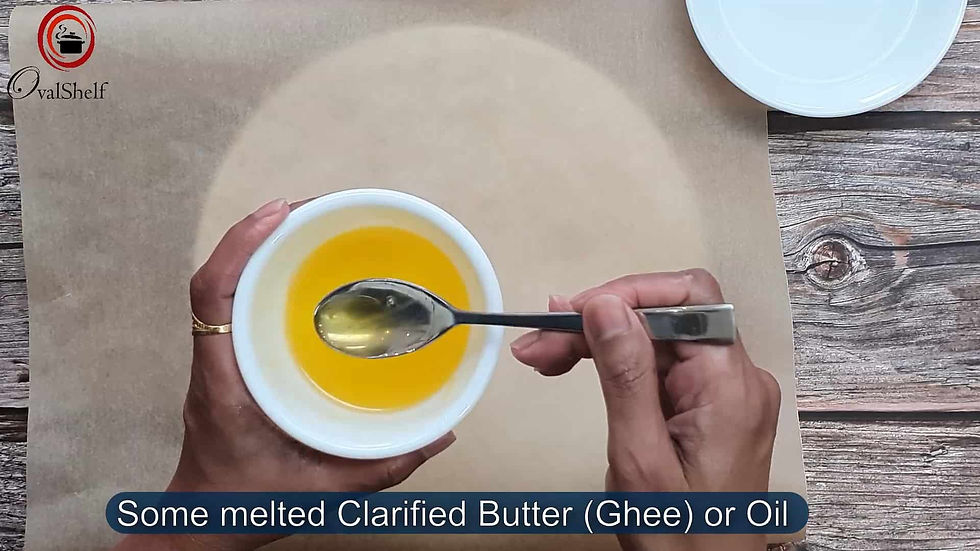
• Now place a parchment paper / butter paper on rolling board / worktop and smear some melted clarified butter (ghee) or oil on top.
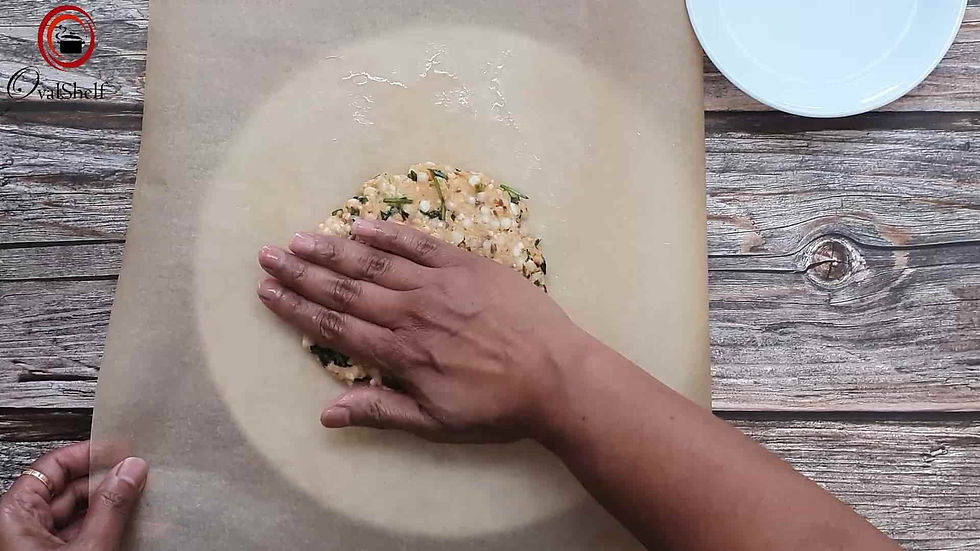
• Place a ball on paper and start flattening it gently with your palm. Dip your palm and fingers in some water whilst flatten to avoid dough from sticking to your palm.

• Press the dough with one hand and rotate the paper with other hand to form a circle. Seal any cracks that might appear on the sides. Make sure surface is evenly flat and smooth from all over and doesn’t have finger marks.

• Make a hole in the centre.

• Heat a non-stick pan on medium setting and smear some melted clarified butter (ghee) or oil on top.
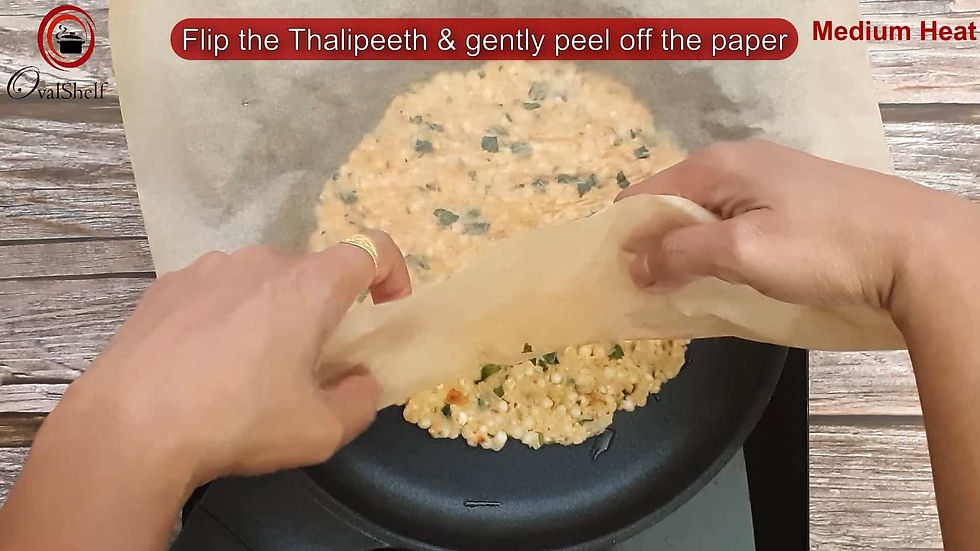
• Once the pan becomes hot, flip the Sabudana Thalipeeth on pan and gently peel off the paper.

• Drizzle some melted clarified butter (ghee) or oil on top and pour some in the centre.
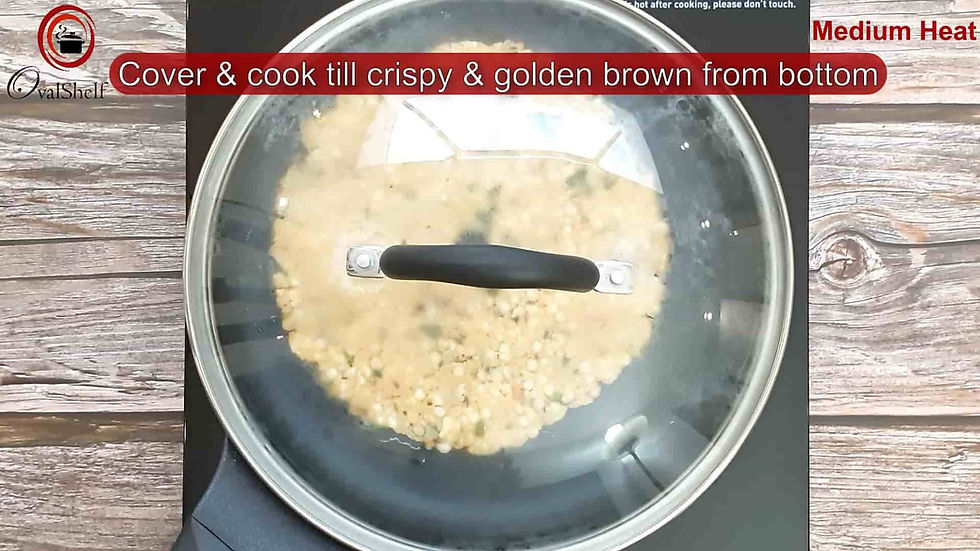
• Cover and cook till Sago Thalipeeth becomes crispy and golden brown from bottom.

• Gently flip it over.

• Again drizzle some more melted clarified butter (ghee) or oil on top.
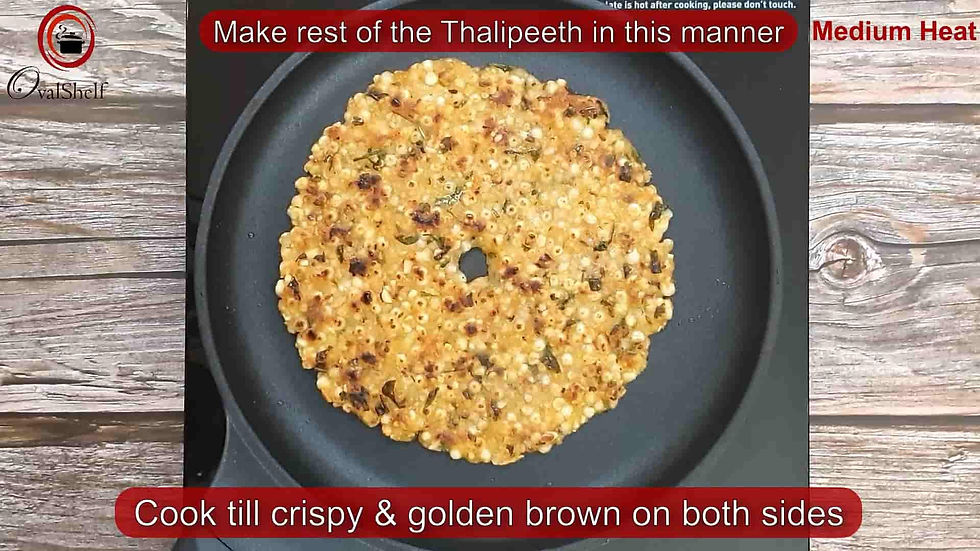
• Let it cook till both the sides of Sabudana Thalipeeth have become crispy and golden brown. Flip Thalipith only once and DO NOT cover after flipping or else it won’t become crunchy.
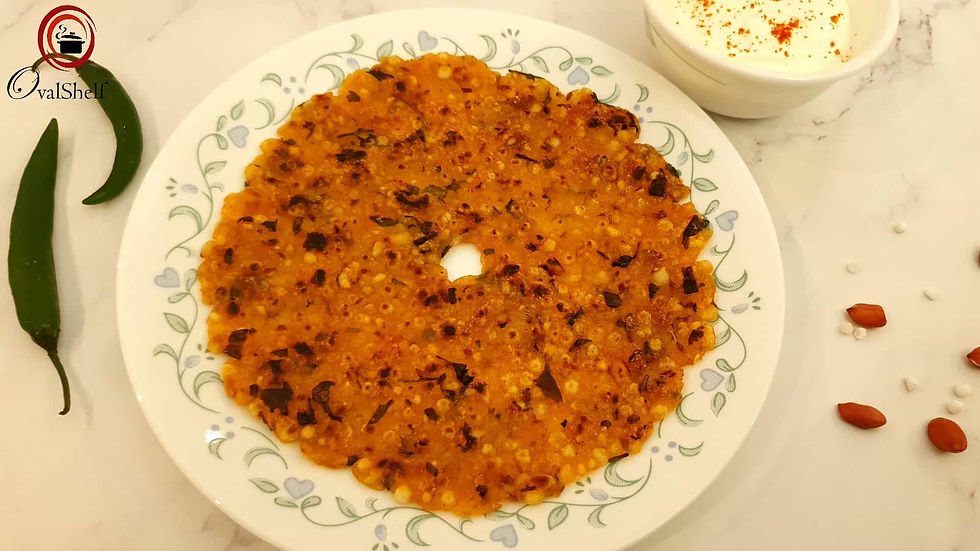
• Serve Sabudana Thalipeeth IMMEDIATELY as leaving it for long and letting it cool down will make it soft and soggy.
♥ We LOVE hearing from you ♥
If you have tried this recipe, please do share your food photo with us. Mention @ovalshelf or use hashtag #ovalshelf on Facebook, Instagram or Twitter. Thank you.
Subscribe to our YouTube Channel

Click here to Subscribe to OvalShelf's YouTube Channel to get all our quick, precise and simple video recipes. YouTube subscription is FREE.






Comments